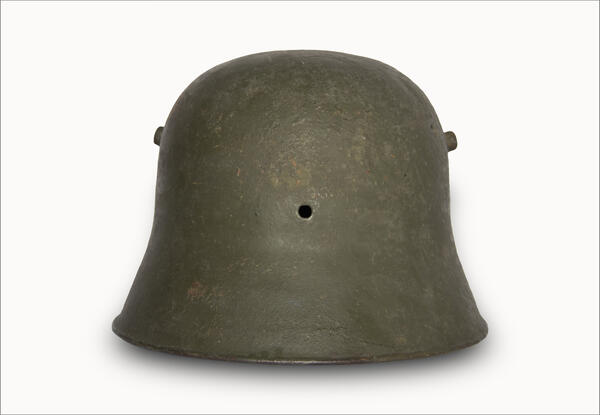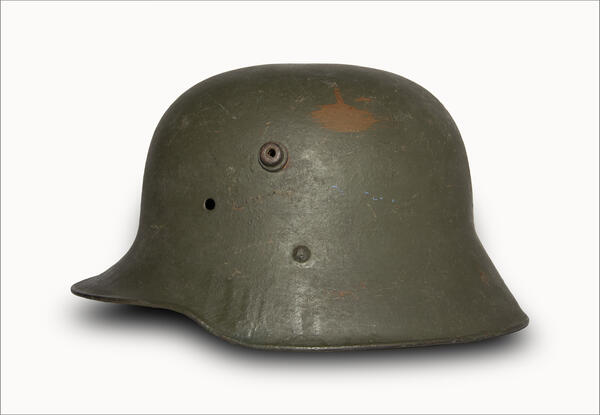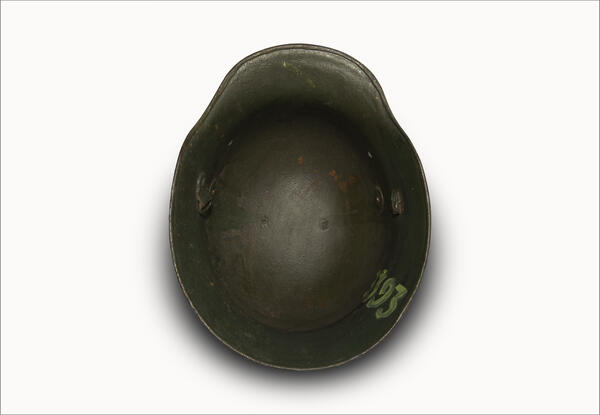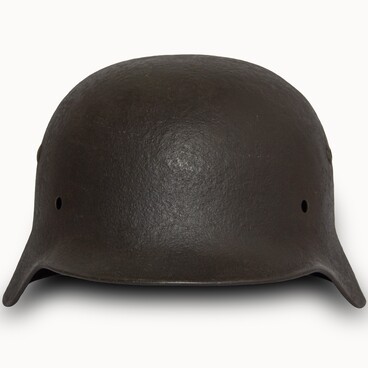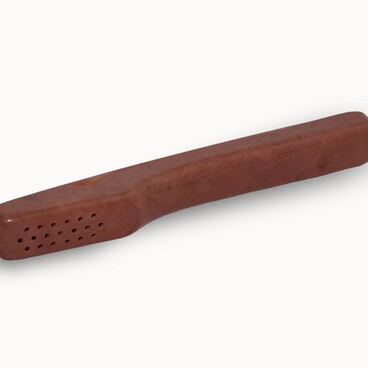In 1916, the German army began to replace the traditional leather helmet, which was known as the “Pickelhelm” or “Pickelhaube” and was developed in the mid-19th century, with the new “Stahlhelm” — a “steel helmet”. It was referred to as the M16 or M1916.
The helmet was developed in 1915 after researchers analyzed common head injuries and their causes. The design was carried out by Friedrich Schwerd, a professor at the Technical Institute of Hanover, who was responsible for the technical details, and the military doctor August Bier.
The M16 helmet was made from a hardened silicon, manganese, and nickel carbon alloy with the use of hot stamping and came in six standard sizes (60, 62, 64, 66, 68, and 70). The helmet provided better protection for the head, face, and neck than the Allied headgear.
The M16 did not protect against bullets. It was intended to provide protection against shrapnel, earth, and stones falling from above, which, according to studies, caused up to 80% of all head wounds. By the end of the First World War, over seven million helmets of that type had been produced.
The M16 had famous distinctive “horns” on the sides with ventilation holes drilled inside them. Their main purpose was to support a special strong brow plate (known as Stirnpanzer), which provided additional protection for the forehead.
The plate was made of thick armored steel (up to 5 mm) and weighed between 2.1 and 3.6 kg, thus being suitable only for temporary use. Since all the plates were the same size, helmets of various sizes had horns of different shapes. The exact number of plates produced for such helmets is unknown. It is believed that there were only several tens of thousands of them, as they proved to be inefficient.
When hit by a bullet, the plate protected the head, but the cervical vertebrae could not withstand the impact force. Sentry on guard and members of machine gun crews usually wore additional armor. After the First World War, the plates were abandoned, although the helmets still had the “horns”.
The M16 helmet was fixed with the help of a special leather chin strap, with its length regulated by two buckles. The M16 helmets were used in the Reichswehr after the First World War, and then in the Wehrmacht, with some helmets remaining in service until 1945.
The helmet was developed in 1915 after researchers analyzed common head injuries and their causes. The design was carried out by Friedrich Schwerd, a professor at the Technical Institute of Hanover, who was responsible for the technical details, and the military doctor August Bier.
The M16 helmet was made from a hardened silicon, manganese, and nickel carbon alloy with the use of hot stamping and came in six standard sizes (60, 62, 64, 66, 68, and 70). The helmet provided better protection for the head, face, and neck than the Allied headgear.
The M16 did not protect against bullets. It was intended to provide protection against shrapnel, earth, and stones falling from above, which, according to studies, caused up to 80% of all head wounds. By the end of the First World War, over seven million helmets of that type had been produced.
The M16 had famous distinctive “horns” on the sides with ventilation holes drilled inside them. Their main purpose was to support a special strong brow plate (known as Stirnpanzer), which provided additional protection for the forehead.
The plate was made of thick armored steel (up to 5 mm) and weighed between 2.1 and 3.6 kg, thus being suitable only for temporary use. Since all the plates were the same size, helmets of various sizes had horns of different shapes. The exact number of plates produced for such helmets is unknown. It is believed that there were only several tens of thousands of them, as they proved to be inefficient.
When hit by a bullet, the plate protected the head, but the cervical vertebrae could not withstand the impact force. Sentry on guard and members of machine gun crews usually wore additional armor. After the First World War, the plates were abandoned, although the helmets still had the “horns”.
The M16 helmet was fixed with the help of a special leather chin strap, with its length regulated by two buckles. The M16 helmets were used in the Reichswehr after the First World War, and then in the Wehrmacht, with some helmets remaining in service until 1945.


